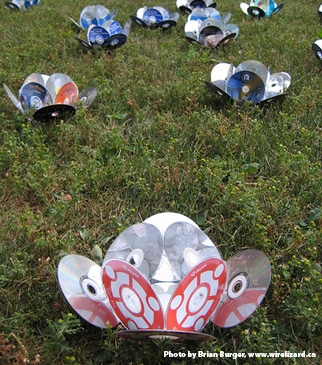Considering the future of CD packaging
March 11, 2015

"Given that electronic distribution of music will not overtake physical products until sometime in the next decade, there is a need currently to consider options to reduce the environmental impact of CD packaging,” states the executive summary of Comparing Packaging Options for Compact Discs: An Environmental and Toxicological Assessment — a new report from the Sustainable Packaging Working Group (SPWG). Members of the group include Recording Industry Association of America member label and distribution representatives and The National Association of Recording Merchandisers member retailers and wholesalers.
SPWG commissioned an independent research organization— Sustainability A to Z—to conduct the research and prepare the report. According to the research, CDs represented more than 80 percent of the global market in 2006, but the sales volume of physical media fell by 21 percent in 2007 compared with the previous year. The report notes that downloads of digital music have not been able to substitute for these losses and forecasts that electronic distribution of music won’t overtake physical media until sometime in the next decade. Therefore, SPWG commissioned the study to further understand the environmental and human health impacts for several CD packaging option across a variety of environmental impact categories and considering the entire lifecycle of the package.
The packaging options studied, include conventional polystyrene (PS) jewel cases; alternative polypropylene (PP) jewel cases; and conventional 6-panel paperboard packages, made from virgin and 100 percent recycled content feedstock. Impacts evaluated, include energy use, greenhouse gas emissions, water use, ecotoxicity and human health impacts.
Researchers found that the largest contributor to ecotoxicity for all CD packaging options is fossil fuels, through processing as feedstock material in plastics, combustion for electricity and heat, and the incineration of the fuel embodied in plastic. They also found that feedstock for PVC packaging has the strongest positive association with health hazards, including cancer, neurotoxicity and damaging liver effects in humans. Researchers also noted that dioxins and furans, which can be produced when chlorine-containing materials such as PVC or bleached paper are burned, also have very serious documented health effects. The full report contains a litany of recommendations, including the following:
Consider the environmental trade-offs associated with moving from polymers to paperboard packaging. Moving from plastic to paperboard CD packaging will necessitate increased use of adhesives, to fasten paperboard front-to-back, affix liner notes, and/or affix plastic CD hubs in the base of digipak-style packages.
Consider the use of PLA, particularly for CD trays in digipak-style packages.
Ask suppliers for paperboard packaging designs that are stiff enough to be processed in an over-wrapping machine, as opposed to being shrink-wrapped.
Reduce or eliminate the use of PVC in jewel cases or plastic film.
Consider use of PP instead of PS in packaging materials.
About the Author(s)
You May Also Like


